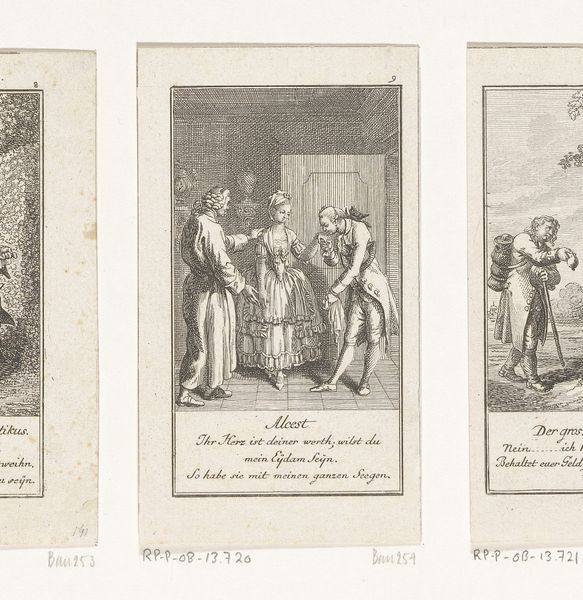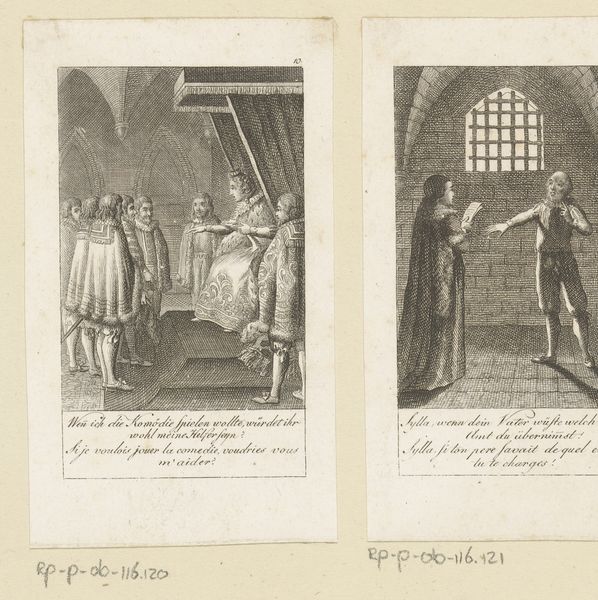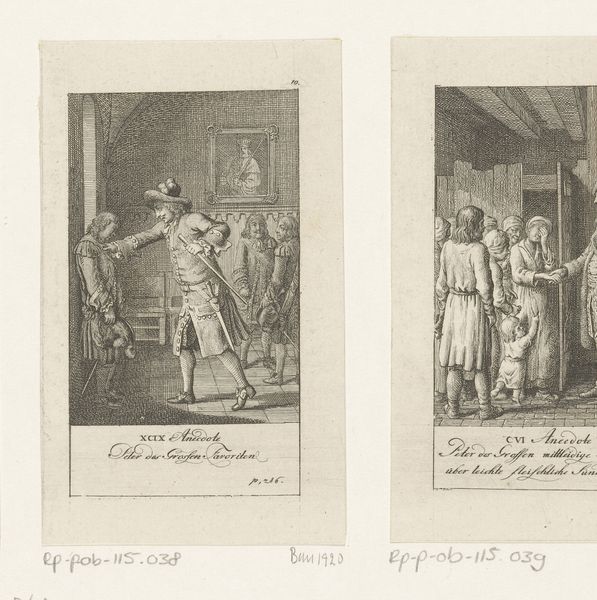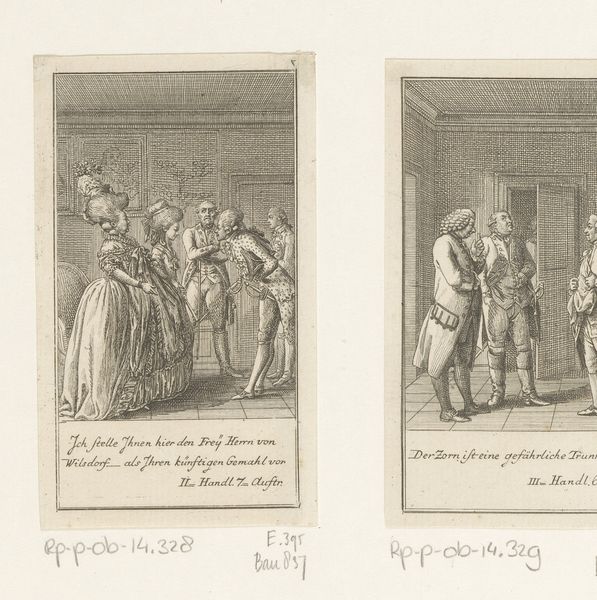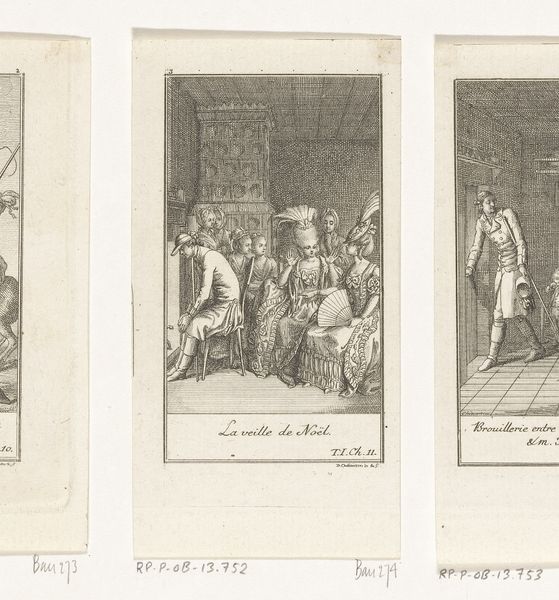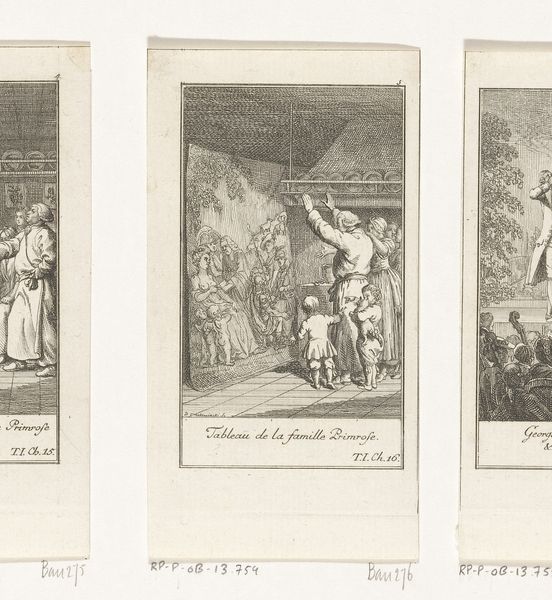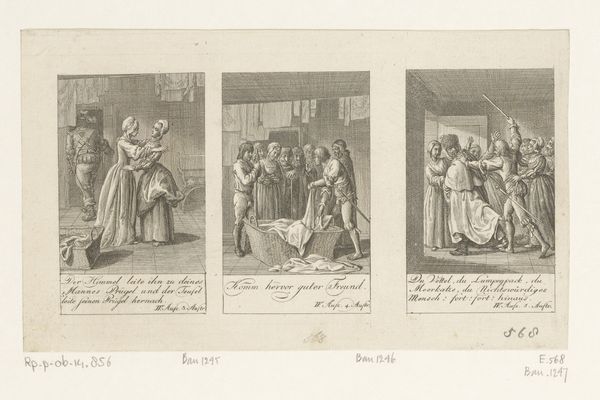
Peter de Grote bezoekt het huis van Martin Luther in Wittenberg 1789
0:00
0:00
Dimensions: height 104 mm, width 62 mm
Copyright: Rijks Museum: Open Domain
Curator: This print, “Peter de Grote bezoekt het huis van Martin Luther in Wittenberg” by Daniel Nikolaus Chodowiecki from 1789, rendered in etching, strikes me with its illustrative clarity. The figures are meticulously detailed. What do you see when you look at it? Editor: It feels like a captured historical moment, a narrative frozen in time. Peter the Great seems almost like a tourist etching his name onto the wall! How do you interpret this work through its materials and context? Curator: Look at the technique of etching itself. The precise lines allowed for mass production, making this historical "snapshot" accessible. This relates directly to the dissemination of knowledge, not unlike Luther’s own project. Consider also Chodowiecki, a Huguenot refugee in Berlin: he is creating images for a rising middle class interested in narratives of power, piety, and progress. It’s about the market for imagery as much as it is about historical representation. Don’t you find the context illuminating the meaning? Editor: I see your point. The act of creating prints to distribute the stories to a wider audience reflects the story itself about the power of disseminating knowledge, although I can't help think that, in comparison to the subject itself (royalty), the printed material itself seems less impressive, lacking the sense of monumentality. Is that on purpose? Curator: Exactly! Think about the labour involved in creating this etching. It’s reproducible, distributed – democratic, even. Royalty gains its power by establishing scarcity, not mass accessibility! The act of visiting, commemorating through graffiti and distributing prints all reflect different values, different ideologies clashing and melding. What did you learn? Editor: That looking at art through its method of production reveals its societal values, challenging preconceived assumptions.
Comments
No comments
Be the first to comment and join the conversation on the ultimate creative platform.
